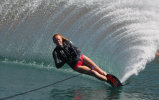I was thinking around 900-1000 pounds. But that was when I asked this question a couple days ago, reading most of the comments and understanding the seriousness of the flight and amount of level necessary- who knows how much I’m going to weight in 10 years

)
You might want to look at a Cessna 182, those are good cross country machines with a decent useful load and speed. It is practical for you to move into a 182 easily as well. I don’t know the useful load off hand, but if you are saying 900-1000 lbs of people/baggage, plus fuel, you might need to make it a group of 3 guys and reduce a bit of weight.
In aviation you really need to start slow, you can get your PPL easily in under a month, but to fly IFR in actual IMC conditions in my opinion takes several years of flying experience to do this safely. I’ve flown to Miami, Alaska, NYC all from Chicago, mostly in good weather, but the few times I had some weather got a little scary quick and from those experiences I set my own personal limitations that are far above (or more restrictive) what you can legally do. Took me years to figure this out too. By the time you get your ratings and go through the airplane buying experience, you and your buddies might have a different mission. Also when flying with your friends and the weather changes for the worse, you are pressured into flying to get your buddies back to their wives, children, jobs, etc. Have you ever had to tell them hey you’re stuck here until the weather clears? I’ve had friends wait on me for 4-5 days before and had to rebook commercial flights before too because of my decision to not fly. One time a friend’s Mom told me they wanted to fly with us but had to be back before dinner on a day trip to KSSI and I said no because I don’t want to be pressured into flying back if the weather changes or the airplane has an issue. Not just the weather but also the pilot needs to be 100%, not sick, fully with it and ready to fly the airplane.
You can charter a PC12 with a single pilot and sit up front in the right seat, and after you get bored of not chilling with your buddies you can go in the back and have a drink. Might be more fun, cheaper and safer like others suggested.
If you love flying and want to take your airplane out by yourself for the $100 hamburgers, change her oil and polish her up yourself, practice weekly, then it might be a good thing for you. Airplanes that sit begin to have maintenance issues, they need TLC.
Once you have your airplane for a couple years, you’ll learn a LOT, like how she runs, maintenance, and if you actually use her. And if YES then I would consider upgrading at that time. I’m on my third insurance year for my Arrow and been a pilot since 2020, I have a more basic Arrow with a 6 pack, she runs well, I’ve had things fixed and still things to fix, but we are now talking about something faster, but I am not even close to thinking about icing. I want better avionics and to start flying more IMC but that’s going to be another process where I have to learn to set my limitations on cloud layers, bases and tops, at departure en route and destination as well.

